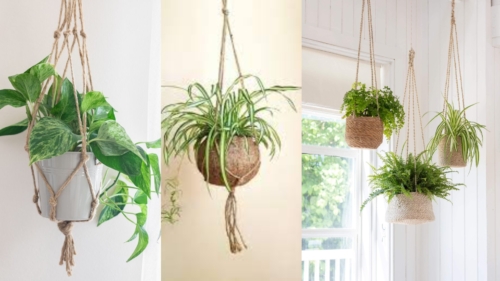Hanging plants are a popular choice for interior design, bringing beauty and numerous benefits to indoor spaces. Also, when incorporating hanging plants into a sustainable ceiling, it’s important to follow certain guidelines.
In this article, we’ll explore the essential do’s and don’ts to ensure that your hanging plants thrive while contributing to a sustainable environment.
The Do’s
- Choose native or low-maintenance plants
- Select air-purifying plants
- Use eco-friendly hanging materials
- Incorporate a drip tray or water-catching system
- Prioritize natural lighting
The Don’ts
- Avoid overwatering
- Don’t neglect maintenance and care
- Avoid toxic pesticides or fertilizers
- Don’t overcrowd your ceiling space
The Do’s
1. Choose native or low-maintenance plants
Opt for plants suited to your local climate that require minimal care. Native plants are resilient and support local ecosystems. Also, low-maintenance plants reduce the need for excessive watering, fertilizers, and pesticides.
2. Select air-purifying plants
Choose plants like pothos, spider plants, and peace lilies that have excellent air-purifying properties. Besides, they enhance indoor air quality, promoting a healthier environment.
3. Use eco-friendly hanging materials
Opt for sustainable materials like jute, cotton, or recycled fabric to hang your plants. With that, avoid synthetic fibers or non-biodegradable plastics that contribute to environmental pollution.
4. Incorporate a drip tray or water-catching system
Prevent water wastage by placing a drip tray or water-catching system beneath your hanging plants. To add, collect and reuse excess water for watering other plants.
5. Prioritize natural lighting
Place your hanging plants in areas with ample natural light. Then, this reduces the need for artificial lighting, conserves energy, and supports plant growth.
The Don’ts
1. Avoid overwatering
Overwatering leads to root rot and unnecessary water consumption. Further, monitor moisture levels and water your hanging plants only when necessary.
2. Don’t neglect maintenance and care
Regularly inspect your hanging plants for pests, prune as needed, and provide proper nutrients. Hence, neglecting care can result in plant decline and the need for replacement.
3. Avoid toxic pesticides or fertilizers
Steer clear of harmful chemicals in pesticides or fertilizers. So, choose organic and natural alternatives that are safe for plants and the environment.
4. Don’t overcrowd your ceiling space
Avoid overcrowding your ceiling with hanging plants. Insufficient airflow hinders plant health and growth. Additionally, allow enough space between plants to promote proper circulation and avoid resource competition.
Incorporating sustainable hanging plants into your ceiling design enhances the aesthetics and environmental impact of your indoor space. By following the do’s and don’ts outlined in this article, you can ensure that your hanging plants flourish while minimizing their environmental footprint. On top of that, remember to choose suitable plants, utilize eco-friendly materials, provide regular care, and prioritize conservation practices. Thus, with these considerations in mind, you’ll create a sustainable and visually appealing atmosphere in your home through your ceiling hanging plants.
Take a look at Sustainable Ceiling Wallpaper Ideas for Eco-Friendly Spaces for more additional inspiration.
About Us:
Founded in 2017, Satin and Slate is one of the elite interior design studios in Southern California. Located in Long Beach, this dedicated team of designers oversees from kitchen and bathroom renovations to commercial projects. Equipped with their own showroom/studio they can satisfy the needs of any client. Featuring clean lines, bright colors and fresh ideas Satin and Slate’s mission is to bring your vision to life and help transform your space into something extraordinary.







